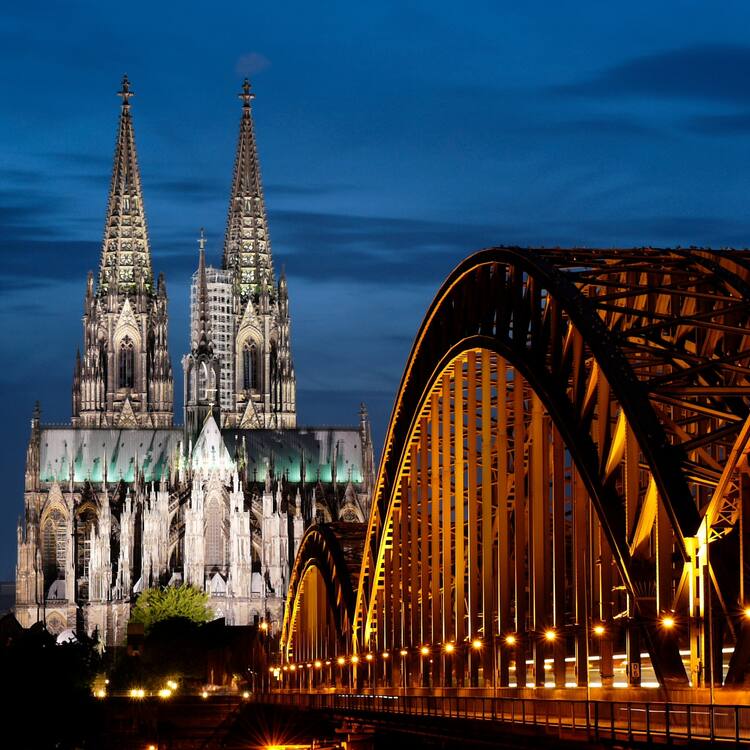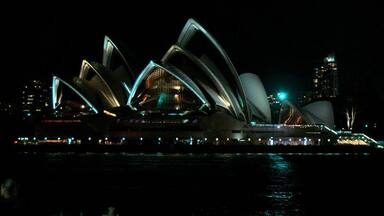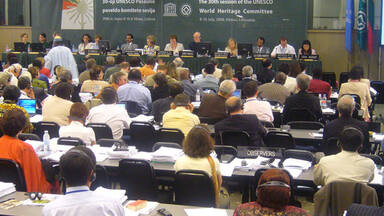Cologne Cathedral
Cologne Cathedral
Begun in 1248, the construction of this Gothic masterpiece took place in several stages and was not completed until 1880. Over seven centuries, successive builders were inspired by the same faith and a spirit of absolute fidelity to the original plans. Apart from its exceptional intrinsic value and the artistic masterpieces it contains, Cologne Cathedral testifies to the enduring strength of European Christianity.
Description is available under license CC-BY-SA IGO 3.0
Cathédrale de Cologne
Commencée en 1248, la construction de ce chef-d'œuvre de l'art gothique se fit par étapes et s'acheva en 1880. Au cours de ces sept siècles, ses bâtisseurs successifs furent animés de la même foi et d'un esprit de fidélité absolue aux plans d'origine. Outre son exceptionnelle valeur intrinsèque et les chefs-d'œuvre qu'elle recèle, la cathédrale de Cologne témoigne de la force et de la persistance de la foi chrétienne en Europe.
Description is available under license CC-BY-SA IGO 3.0
كاثدرائية كولونيا
بدأ بناء الكاتدرائية وهي تحفة من الفن القوطي في العام 1248. جرى العمل بها على مراحل إلى أن انتهت كلياً في العام 1880. خلال القرون السبعة، تحلّى البناة المتوالون بالإيمان نفسه وبروح الوفاء المطلق للمخططات الأصلية. وبالإضافة إلى قيمتها بحدّ ذاتها والى التحف الفنية التي تحتويها، فإن كاثدرائية كولونيا شهادة عن قوة وتواصل الإيمان المسيحي في أوروبا.
source: UNESCO/CPE
Description is available under license CC-BY-SA IGO 3.0
科隆大教堂
哥特式科隆大教堂始建于1248年,历经几个阶段的修建,直到1880才建成。在修建科隆大教堂的七个世纪中,一代代建筑师们秉承着相同的信念,做到了绝对忠实于最初的设计方案。除了其自身的重要价值和教堂内的艺术珍品以外,科隆大教堂还表现了欧洲基督教经久不衰的力量。
source: UNESCO/CPE
Description is available under license CC-BY-SA IGO 3.0
Кафедральный собор в городе Кëльн
Начатое в 1248 г. строительство этого шедевра готики проходило в несколько стадий, и было завершено только в 1880 г. Более семи столетий сменяющие друг друга строители вдохновлялись все той же верой и духом абсолютной преданности первоначальным замыслам. Кроме исключительной ценности самого здания и художественных шедевров, которые в нем находятся, Кëльнский собор важен как символ сохранения силы христианства в Европе.
source: UNESCO/CPE
Description is available under license CC-BY-SA IGO 3.0
Catedral de Colonia
Iniciada en 1248, la construcción de esta obra de arte gótico fue realizada por etapas y culminó en 1880. A lo largo de esos siete siglos, sus sucesivos constructores fueron animados por una misma fe y un espíritu de total fidelidad a los planos arquitectónicos primigenios. Además del excepcional valor de su arquitectura y de las obras de arte que contiene, esta catedral constituye un testimonio de la gran fuerza y la perdurabilidad de la fe cristiana en Europa.
source: UNESCO/CPE
Description is available under license CC-BY-SA IGO 3.0
ケルン大聖堂
source: NFUAJ
Dom van Keulen
Source: unesco.nl
Outstanding Universal Value
Brief synthesis
Begun in 1248, the building of this Gothic masterpiece took place in several stages and was not completed until 1880. Over seven centuries, its successive builders were inspired by the same faith and by a spirit of absolute fidelity to the original plans. Apart from its exceptional intrinsic value and the artistic masterpieces it contains, Cologne Cathedral bears witness to the strength and endurance of European Christianity. No other Cathedral is so perfectly conceived, so uniformly and uncompromisingly executed in all its parts.
Cologne Cathedral is a High Gothic five-aisled basilica (144.5 m long), with a projecting transept (86.25 m wide) and a tower façade (157.22 m high). The nave is 43.58 m high and the side-aisles 19.80 m. The western section, nave and transept begun in 1330, changes in style, but this is not perceptible in the overall building. The 19th century work follows the medieval forms and techniques faithfully, as can be seen by comparing it with the original medieval plan on parchment.
The original liturgical appointments of the choir are still extant to a considerable degree. These include the high altar with an enormous monolithic slab of black limestone, believed to be the largest in any Christian church, the carved oak choir stalls (1308-11), the painted choir screens (1332-40), the fourteen statues on the pillars in the choir (c. 1300), and the great cycle of stained-glass windows, the largest existent cycle of early 14th century windows in Europe. There is also an outstanding series of tombs of twelve archbishops between 976 and 1612.
Of the many works of art in the Cathedral, special mention should be made to the Gero Crucifix of the late 10th century, in the Chapel of the Holy Cross, which was transferred from the pre-Romanesque predecessor of the present Cathedral, and the Shrine of the Magi (1180-1225), in the choir, which is the largest reliquary shrine in Europe. Other artistic masterpieces are the altarpiece of St. Clare (c. 1350-1400) in the north aisle, brought here in 1811 from the destroyed cloister church of the Franciscan nuns, the altarpiece of the City Patrons by Stephan Lochner (c. 1445) in the Chapel of Our Lady, and the altarpiece of St. Agilolphus (c. 1520) in the south transept.
Criterion (i): Cologne Cathedral is an exceptional work of human creative genius.
Criterion (ii): Constructed over more than six centuries Cologne Cathedral marks the zenith of cathedral architecture and at the same time its culmination.
Criterion (iv): Cologne Cathedral is a powerful testimony to the strength and persistence of Christian belief in medieval and modern Europe.
Integrity
Cologne Cathedral contains all the elements necessary to express the Outstanding Universal Value and is of appropriate size. All features and structures to convey its significance as Gothic masterpiece are present.
Authenticity
Cologne Cathedral has lost its original architectural context, but in the nineteenth and twentieth century an urban ensemble has been created around it, of which the building of the new Wallraf-Richartz-Museum is the last element. Form and design, use and function of Cologne Cathedral have remained unchanged during the centuries of construction. All the work, from the 13th to the 19th century, was carried out with scrupulous respect for the original design, and this tradition was continued in the post-World War II reconstruction. In this respect, Cologne Cathedral may be considered to be sui generis and hence its authenticity is absolute.
Protection and management requirements
The laws and regulations of the Federal Republic of Germany and the State of North Rhine-Westphalia guarantee the consistent protection of the Cologne Cathedral and its surroundings: The Cathedral is a listed monument according to paragraphs 2 and 3 of the Act on the Protection and Conservation of Monuments in the State of North Rhine-Westphalia, dated 11March 1980 (Protection Law). Conservation and building activities within and outside the property and in the buffer zone are regulated by paragraph 9 (2) of the Protection Law and Local Building Plans in order to ensure the effective protection of the important views of the Cathedral.
A Steering Committee (the Cathedral Construction Commission or Dombaukommission), which was established in 1946 and consists of the Archbishop of Cologne, the Dean of the Cathedral, the Vicar General of the Archdiocese of Cologne, the Minister of the State North Rhine-Westphalia in charge of monument protection and the State Conservator of the Ministry, supervises the work of the Cathedral Workshop. The Cathedral Workshop – under the leadership of the Cathedral architect – is responsible for the maintenance, conservation and restoration in the medieval tradition and acts in concert with the regional and local historic monument conservation authorities.
The management system consists of a set of maintenance and conservation measures which is annually reviewed and updated when required by the Steering Committee.

 View photos from OUR PLACE the World Heritage collection
View photos from OUR PLACE the World Heritage collection
